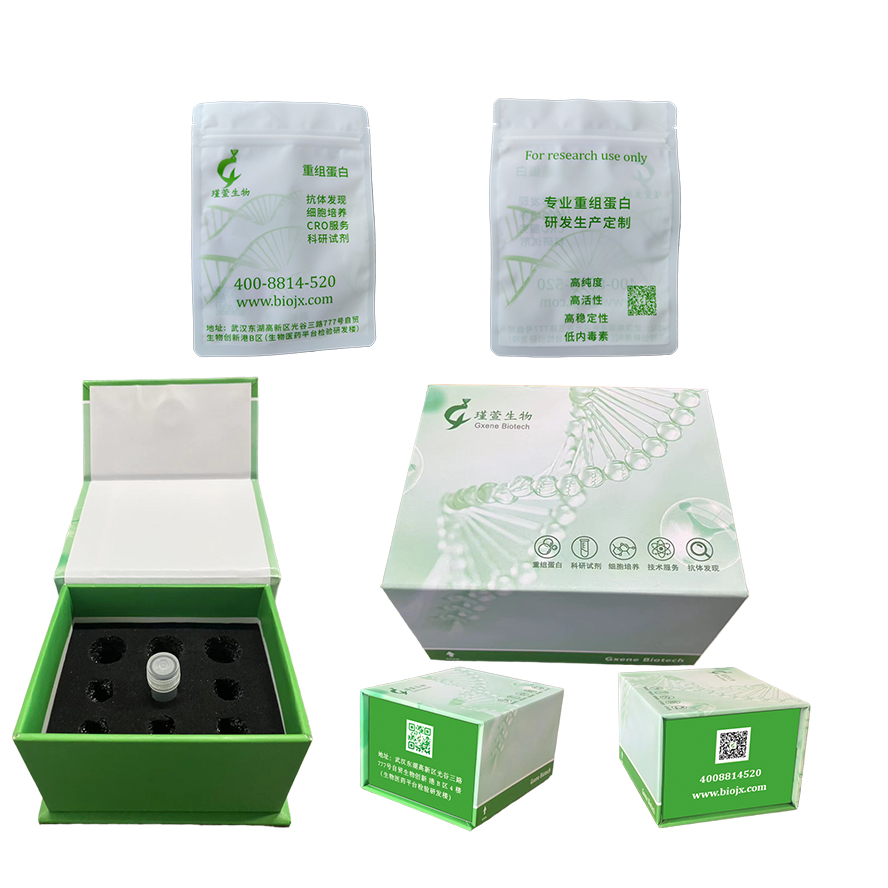


研究方向
IL-32 蛋白是细胞因子家族的成员,具有酪氨酸硫酸化位点、三个潜在的 N-肉豆蔻酰化位点、多个假定的磷酸化位点和 RGD 细胞附着序列等特征。在丝裂原激活 T 细胞或 IL-2 激活 NK 细胞后,其表达显着增加。IL-32 在诱导巨噬细胞产生 TNFα 方面发挥着关键作用,表明其参与炎症反应。该基因表现出选择性转录剪接变体,产生具有不同功能特征的不同亚型。IL-32 在各种组织中广泛表达,在小肠 (RPKM 122.1)、脾 (RPKM 121.0) 和其他 22 个组织中观察到较高水平,强调了其不同的作用以及对免疫调节和组织特异性功能的潜在贡献。
Measured by its ability to induce TNF alpha secretion by RAW 264.7 mouse monocyte/macrophage cellsunder serum free conditions in the presence of muramyl dipeptide (MDP). The ED50 for this effect is less than 12 μg/mL
Interleukin-32 gamma (IL-32 gamma ), a proinflammatory cytokine previously termed natural killer cells transcript 4 (NK4) (also tumor necrosis factor alpha (TNF alpha ) -inducing factor), is a 27 kDa, secreted glycoprotein that belongs to no known cytokine family. Little is known about it. However, because it has the ability to induce proinflammatory cytokines such as TNF alpha and IL-8 in THP-1 cells, and activates typical cytokine signaling pathways involving NF-kappa B and p38, IL-32 is considered to be a cytokine. Human IL-32 gamma is 234 amino acids (aa) in length. It contains a 30 aa signal sequence, plus a 204 aa mature region that possesses three potential myristoylation sites and one potential N-linked glycosylation site . IL-32 gamma represents the standard protein, and is the first isoform. In addition, there are five potential alternate splice forms. IL-32 alpha lacks two of the splicing variant regions found in IL-32 gamma (aa 19 - 64 and aa 154 - 210). IL-32 beta is missing aa 19 - 64, and IL-32δ is missing aa 1 - 10 and aa 19 - 64. IL-32 epsilon and IL-32 zeta are novel isoforms that have not yet been characterized. Human IL-32 gamma is active in mouse cells. No rodent orthologs have been reported. No putative IL-32 receptor has been found, but using the isoform IL-32 alpha, the protein proved to bind to proteinase 3 (PR3). IL-32 is involved in activation-induced cell death in T cells and is highly expressed in tissues in a number of disease states including the synovial tissue in rheumatoid arthritis and human colon epithelial tissue in Crohn’s disease. Using siRNA to endogenous IL-32 in primary human blood monocytes, there were significant decreases (greater than 50%) in IFN-gamma, TNF, and IL-6, suggesting that endogenous IL-32 is upstream in the cytokine cascade in monocytes . Increased levels of IL-32 during human immunodeficiency virus (HIV) infection may play a protective role by suppressing HIV replication. In addition, mycobacteria species are potent stimuli for the production of IL-32 from human monocytes and macrophages.